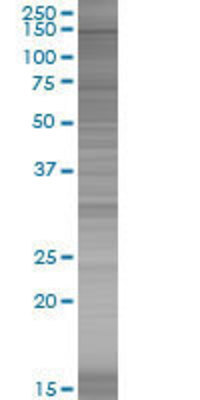| Gene Symbol |
SMC3
|
| Entrez Gene |
9126
|
| Alt Symbol |
BAM, BMH, CDLS3, CSPG6, HCAP, SMC3L1
|
| Species |
Human
|
| Gene Type |
protein-coding
|
| Description |
structural maintenance of chromosomes 3
|
| Other Description |
SMC protein 3|basement membrane-associated chondroitin proteoglycan|chondroitin sulfate proteoglycan 6 (bamacan)|chromosome-associated polypeptide|structural maintenance of chromosomes protein 3
|
| Swissprots |
Q5T482 O60464 A8K156 Q9UQE7
|
| Accessions |
EAW49557 EAW49558 Q9UQE7 AF020043 AAC14893 AF067163 AAD32447 AJ005015 CAA06289 AK289771 BAF82460 AK315845 BAF98736 BC047324 AAH47324 CA439554 NM_005445 NP_005436
|
| Function |
Central component of cohesin, a complex required for chromosome cohesion during the cell cycle. The cohesin complex may form a large proteinaceous ring within which sister chromatids can be trapped. At anaphase, the complex is cleaved and dissociates from chromatin, allowing sister chromatids to segregate. Cohesion is coupled to DNA replication and is involved in DNA repair. The cohesin complex plays also an important role in spindle pole assembly during mitosis and in chromosomes movement. {ECO:0000269|PubMed:11076961, ECO:0000269|PubMed:19907496}.
|
| Subcellular Location |
Nucleus. Chromosome. Chromosome, centromere. Note=Associates with chromatin. Before prophase it is scattered along chromosome arms. During prophase, most of cohesin complexes dissociate from chromatin probably because of phosphorylation by PLK, except at centromeres, where cohesin complexes remain. At anaphase, the RAD21 subunit of the cohesin complex is cleaved, leading to the dissociation of the complex from chromosomes, allowing chromosome separation. The phosphorylated form at Ser- 1083 is preferentially associated with unsynapsed chromosomal regions (By similarity). {ECO:0000250}.
|
| Top Pathways |
Cell cycle, Oocyte meiosis
|
